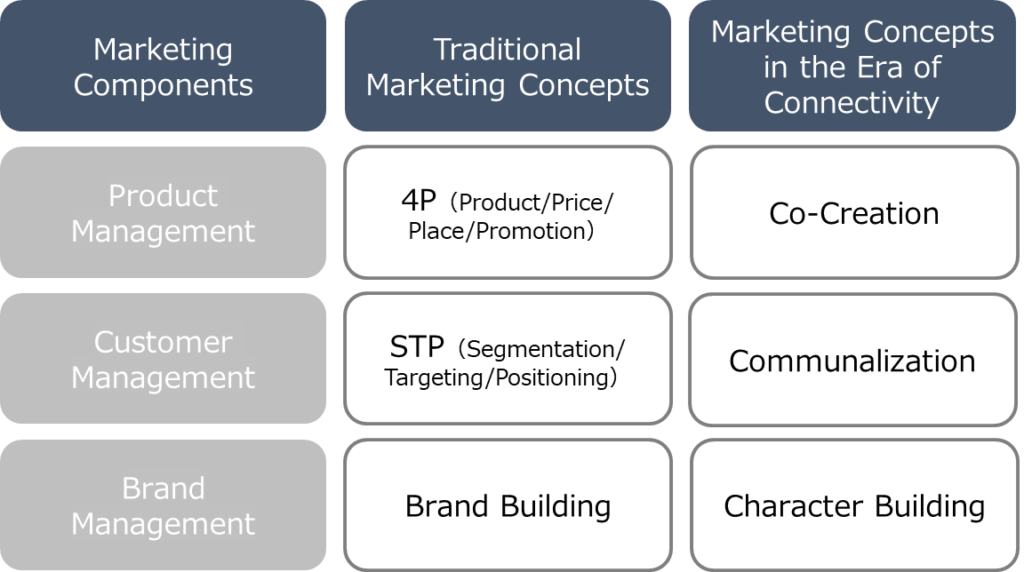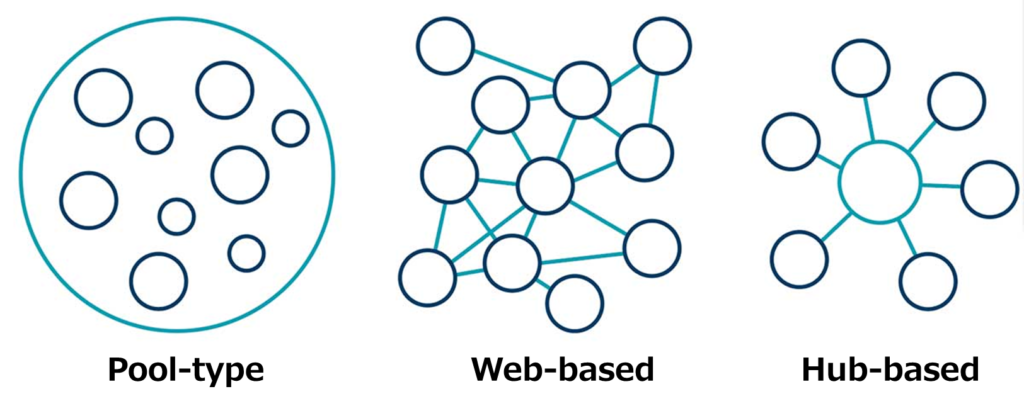With the development of technology, the information asymmetry between companies and their customers is dissolving. Traditional marketing was persuasive. The goal was to sell a product or service, even if it was advertised in a slightly exaggerated way. Nowadays, customers know that this is the way companies advertise. Therefore, it is becoming increasingly important for companies to communicate without the odor of advertising when promoting their products and services.
Contents
Customers believe word of mouth more than company advertisements

Marketing concepts of the past 70 years were primarily based on vertical relationships. However, the current marketing concept has changed to one that is supported by horizontal relationships among connected customers. In recent years, the development of social media has had a particularly large impact.
With the development of social media, customers have come to believe the word of mouth of other customers rather than what companies are sending out. Marketers of any product or service are now using other products themselves and sharing their impressions on social media. Marketing is not only about what marketers do for consumers, but also what consumers do for other consumers.
According to the Nielsen Global Consumer Trends Survey, fewer customers trust advertisements placed by companies, and word of mouth is expected to become the new trusted form of advertising. We now trust the recommendations of acquaintances, and even more so the opinions of customers posted online. Customers trust strangers on social networking sites more than experts.
In response to these changes in customer attitudes toward advertising, advertising cannot help but diversify. Sponsored content has emerged, such as asking influential Instagrammers to take pictures with products and post them, or bloggers to write product reviews, for a fee to post or write about them.
Foundation for marketing activities to win the trust of customers in the future
Companies will need to build communications that emphasize horizontal connections among customers to gain their trust. In future marketing activities, elements such as co-creation, community building, and character building will become important. Let’s take a look at the characteristics of each.

Co-creation
Co-creation represents a new approach to innovation. Companies, customers, suppliers and channel partners collaborate to create new products and value.
The value of a consumer’s experience with a product is unlikely to be the value of the product experience in isolation, but the aggregation of individual consumer experiences creates significant value. This is a way to apply the approach seen in the development of open-source software, where customer feedback is reflected in the product, to other industries.
Companies can improve their products and services by making good use of co-creation that takes place in the horizontal networks that connect customers.
Communalization

The evolution of technology is driving customers to connect and move in the direction of the community. Companies that want to embrace this community and help it grow need to help their customers connect with each other within the community. Communities exist not to serve the company, but to serve their members, and companies need to be aware of this and act in ways that serve the members of the community.
The formation of customer communities is said to be either connected to ideas (pool-type), or the classification of communities is whether consumers are connected to each other (web-based) or to leaders (hub-based).
Pool-type:Customers in a community share identical values but do not necessarily interact with each other. What unites customers is their belief in and strong affection for the brand.
Web-based:Community customers interact with each other. In a typical social media community, it is the one-to-one relationships among members that support the bond.
Hub-based:Community customers gravitate around powerful figures, forming a loyal fan base.
Character building
For a brand to connect with humans, a company must have a unique DNA that allows it to truly differentiate itself. Today, when customers see a brand, they can instantly determine if it is fake or real, and companies need to be consistent in providing experience value that does not contradict their own claims so that they can be judged as authentic.
Customers watch what you do not only in your ads, but also on social media and in your physical stores, and inconsistent behavior will result in a loss of trust. Now that consumers are connected in communities, it is necessary to establish a solid character because losing credibility can lead to the loss of an entire network of potential customers.
As mentioned above, we now live in an age where customers are constantly connected to the Internet and the use of social media is commonplace. Growing companies need marketing that is in tune with the times. Why not incorporate effective word-of-mouth creation, co-creation, community, and character-building?

